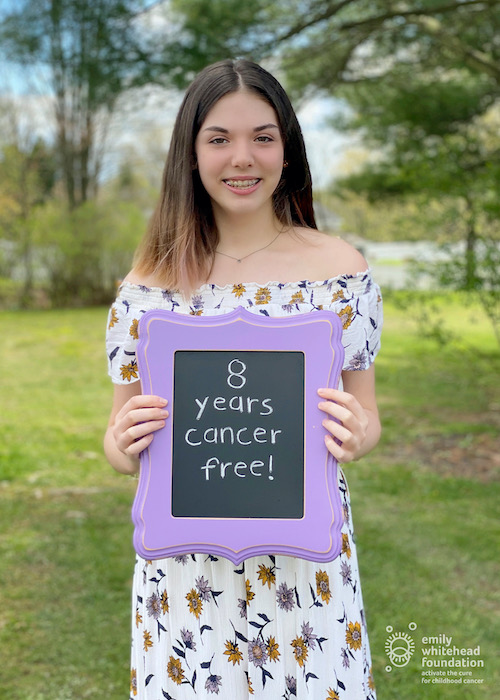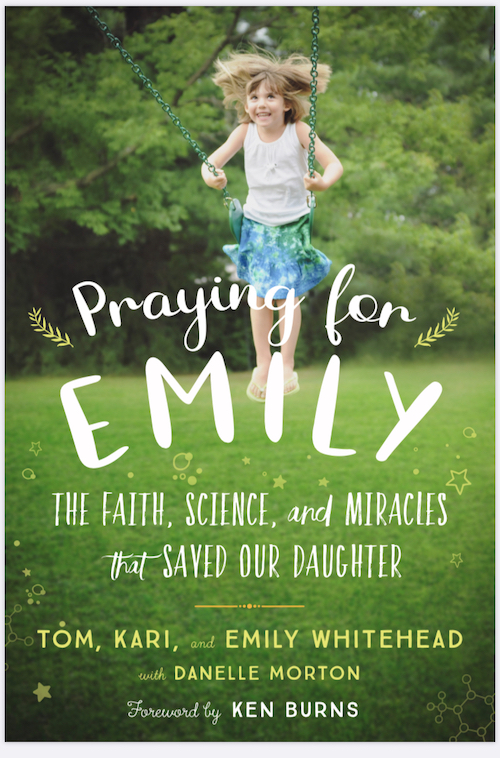Tom Whitehead has met heads of state and dined with Academy Award-winning actors. He’s consulted with some of the most respected doctors in the world. He’s traveled the globe and given so many speeches he’s understandably lost count, raising money for childhood cancer research and the foundation named after his now-teenage daughter.

|
|
Emily Whitehead was diagnosed with cancer in 2010. She was declared cancer free two years later and been that way ever since.
|

|
|
“Praying for Emily” will be released on Oct. 6.
|

|
|
Emily Whitehead meets legendary film director Stephen Spielberg on the set of “West Side Story.” Spielberg directed a remake of the iconic movie that is scheduled to be released later this year.
|
To top it off, he’s done it while battling some health conditions of his own, including skin cancer and an ongoing fight against Crohn’s Disease.
But when he and his family return home to central Pennsylvania, Whitehead doesn’t take much time to rest. The member of Johnstown, Pa., Local 459 goes back to work as a lineman for Penelec, doing what he did long before Emily Whitehead became an international figure.
“We’ll be on a Hollywood set,” Tom Whitehead, 51, said, “and two days later, I’ll be out in the woods working on power lines.”
When it was suggested everyone would understand if he wanted to take a break from such grueling work and go to work full time for the Emily Whitehead Foundation, his response was simple.
“I love my job,” he said, “I really do.”
Whitehead has spoken glowingly about his IBEW brothers and sisters in the past, especially how they came to the aid of him and his wife Kari when Emily was diagnosed with leukemia as a 5-year-old in 2010. He’ll do so again in a soon-to-be released book.
“Praying for Emily: The Faith, Science and Miracles that Saved Our Daughter” is scheduled to be released on Oct. 6. The entire Whitehead family wrote the book along with co-author Danelle Morton. The foreword was written by acclaimed documentary filmmaker Ken Burns, who featured Emily in his 2015 film “Cancer: The Emperor of All Maladies.”
“I’m just a lineman for Penelec,” Tom said. “I never expected to be a keynote speaker in front of people all over the world. We just tried to stay positive and our miracle happened from things that are really hard to explain. I hope that comes through in the book.”
And yes, he made sure the IBEW got mentioned, along with his wife’s co-workers at Penn State, where she was employed during Emily’s battle. He wrote about his own battle with melanoma in hopes of raising awareness about it among members. Construction workers and linemen, who spend much of their time working outside, are particularly susceptible to the form of skin cancer.
“I wanted to tell the story of our family’s faith and how it got us through this and the help that my fellow IBEW members gave that got us through it,” he said. “I want the members to know we’re doing something every single day in the fight against childhood cancer.”
The story of Emily’s recovery has been told in media outlets around the world and Tom figured the family someday would write a book. They have routinely heard from prospective authors and literary agents throughout the years.
When Burns learned that, he put in a call to Endeavor – formerly the William Morris Agency – which represents him, and it agreed to represent the Whiteheads and help them find a co-author. Morton, a former New York Times reporter, has co-written 14 books, including three Times bestsellers.
It’s an amazing story.
Today, Emily is a healthy 15-year-old who just started her sophomore year of high school, nearly a decade after her first diagnosis. Her condition looked especially dire in April 2012, when one doctor suggested the Whiteheads consider putting her into hospice care.
Instead, they turned to Children’s Hospital of Philadelphia, where doctors were beginning an experimental treatment that had never been used on children. They wanted to use a disabled virus that causes AIDS to kill cancer cells. The disabled HIV cells were used in the lab to train Emily’s t-cells – the white blood cells that are a key part of the immune system -- to recognize and kill her b-cells, which were causing the cancer.
She struggled with the treatments initially and her condition took a turn for the worse. But Dr. Carl June had her start using tocilizumab, a drug often used by rheumatoid arthritis patients because it is resistant to aggressive t-cells. Those same cells often cause childhood cancer and doctors thought it might counter some of the trial’s aftereffects.
The plan worked. So did the treatment of injecting the virus, with Emily being declared cancer-free just a month later. She’s been in remission ever since and a pioneer in the battle against childhood cancer.
Through it all, Tom’s IBEW’s brothers and sisters have been there for support. For instance, they donated 520 hours of vacation time in 2012 so Tom could be beside Emily throughout that difficult year without losing any pay. Financial assistance supplied by members and Kari’s co-workers covered nearly every expense not covered by Medicare, which the Whiteheads qualified for.
Members across North America learned of the Whitehead’s story when Tom spoke at the 2011 International Convention in Vancouver and the 2016 Convention in St. Louis. In 2014, the Whiteheads started the Emily Whitehead Foundation to provide funding for childhood cancer research and to help make T-cell therapy available to more families.
“The science is amazing,” he said. “It’s changed the world. It’s given people new ways to fight cancer and given them hope.”